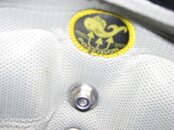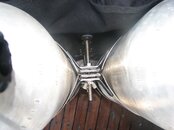Hi, I am new to double tanks setup, just got the kit for my BC, hired an extra regulator and 2 tanks (no manifold) and just kept alternating to breathe from each of the tanks.
I was looking on a manifold to have my setup complete and I was lost, I found too many manifold description.. dual, rotation, isolation ...etc. I thought it is just a way to connect the 2 tanks, is there really a difference and one of them is superior to others?
one other question, if I am to design a manifold (before I am into diving), I would have connected the 2 tanks together and just have 1 regulator taking from both tanks in the middle of the manifold rather than 2 as all manifolds are ... but after being a diver I know that double tanks is the first step towards some tech diving which is all based upon redundancy hence having 2 regulators is needed even if they are both sharing the same air source... so my question is, is there any other reason beside redundancy to have 2 air outlets of the manifold rather than just one?
A final question, why should I need a manifold over my basic setup of 2 tanks, 2 regulators and alternate breathing to balance the air in the 2 tanks every couple of ten bars?
I was looking on a manifold to have my setup complete and I was lost, I found too many manifold description.. dual, rotation, isolation ...etc. I thought it is just a way to connect the 2 tanks, is there really a difference and one of them is superior to others?
one other question, if I am to design a manifold (before I am into diving), I would have connected the 2 tanks together and just have 1 regulator taking from both tanks in the middle of the manifold rather than 2 as all manifolds are ... but after being a diver I know that double tanks is the first step towards some tech diving which is all based upon redundancy hence having 2 regulators is needed even if they are both sharing the same air source... so my question is, is there any other reason beside redundancy to have 2 air outlets of the manifold rather than just one?
A final question, why should I need a manifold over my basic setup of 2 tanks, 2 regulators and alternate breathing to balance the air in the 2 tanks every couple of ten bars?





